Véronique Nichanian: the woman behind Hermès’ menswear
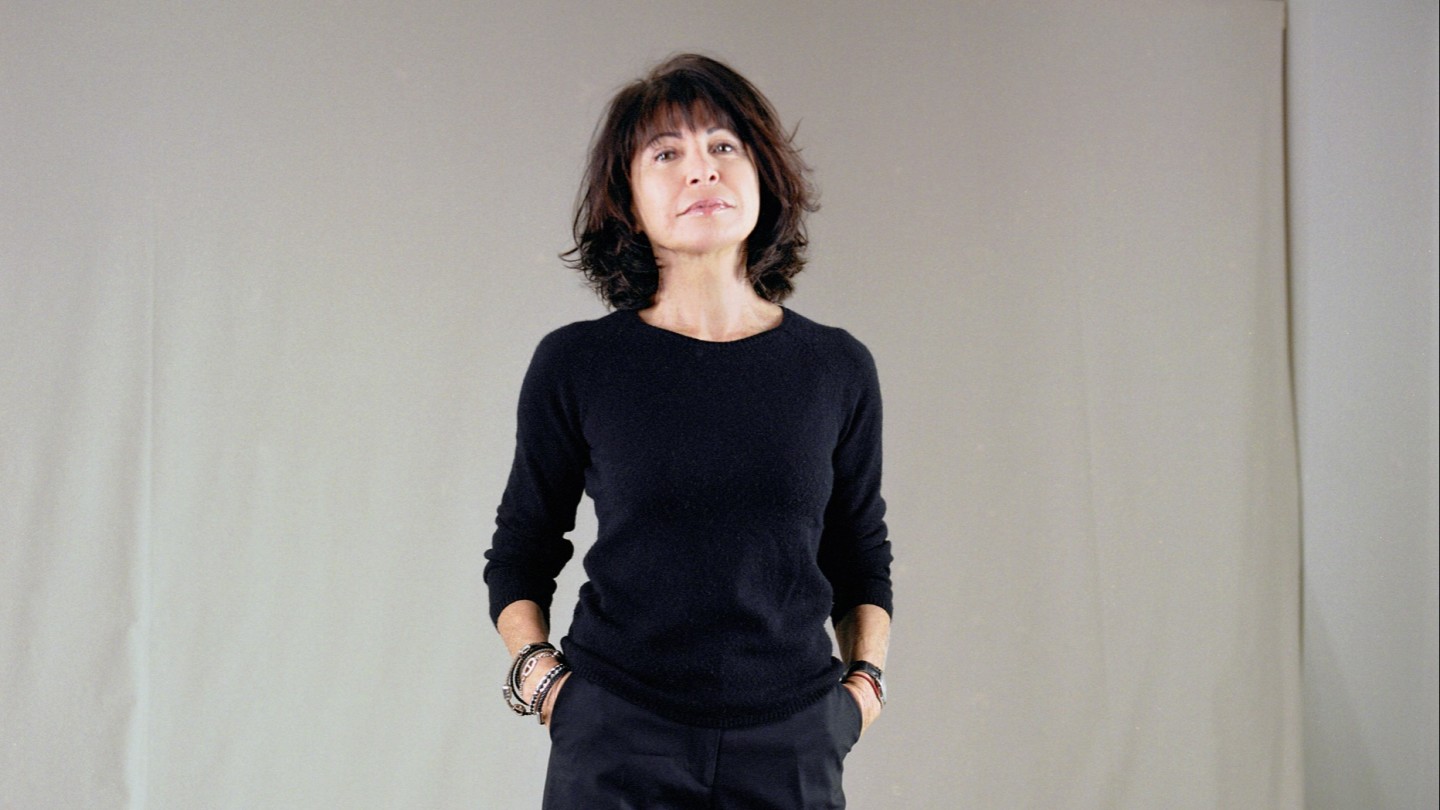
Simply sign up to the Fashion myFT Digest -- delivered directly to your inbox.
In his 2008 book, Happy Victims, about luxury‑obsessional Japanese consumers, the photo-journalist Kyoichi Tsuzuki recalls the story of a patent lawyer and Hermès collector who spent a clean Y500,000 (about $4,500) on an Hermès briefcase. He carries it only with an Hermès towel wrapped around the handle to avoid damaging the leather with perspiration. It’s kind of understandable. Hermès is covetable, veritably worshipped. It’s a fashion house with which the word luxury is not only synonymous but for which it might have been invented. A place that still has some 42 ateliers where custom orders – such as one of its famous celebrity-monikered Kelly or Birkin bags or a softly tailored cashmere suit – are painstakingly stitched by hand. Somehow, chez Hermès, the concept of luxury manages to transcend its current quotidian overuse, as descriptor for everything from household paint to toilet tissue, to retain and convey real meaning.
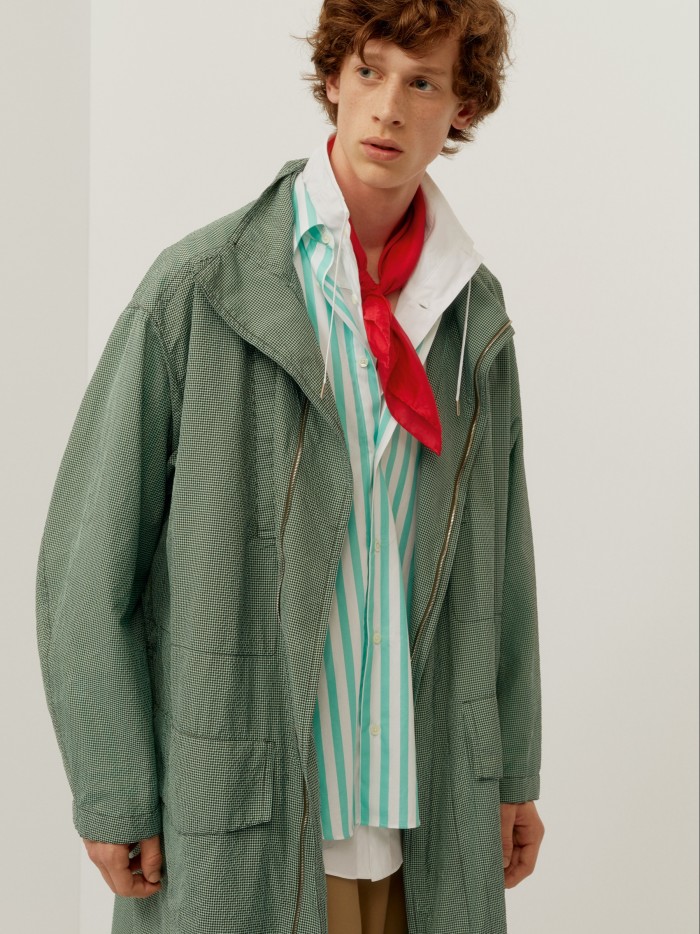
Véronique Nichanian, the artistic director of Hermès’ grandly titled “men’s universe”, sighs with quiet exasperation when it is brought up. “For many years, I hate this word of luxury, because it does not mean anything,” she says. Her accent, like the one in her name, is both acute and French, so hate becomes ’ate, suggesting she somehow devours luxury, consuming it like fast food – another category that has co-opted the phrase. “Everybody does luxury. Small leather [goods], it’s luxury. They put a logo, it’s luxury. This word is too much. We are doing quality things and beautiful things. What is luxury today? It is just to be deeply honest in what you’re doing.”
Honesty is not a response I’ve ever heard to this oft-posed question, but Nichanian is arguably best-placed to answer it. Following the death of Karl Lagerfeld last year, the 65-year-old quietly assumed the honour of being the longest-serving non-founding artistic director in fashion. A handsome, Paris-born woman, slight, with a sharp bob of black hair, she has been at Hermès for 31 years (the label itself is 183 this year), creating collections of discreet, straightforward, luxurious clothes for men with all the money in the world. Her spring/summer 2020 show played out in the courtyard of the Mobilier National, the French furniture repository, a location that Nichanian is kind of in love with. It also gave her the opportunity to seat her audience on chairs of such provenance they not only belong in museums but usually reside there: a Putman, a Prouvé, a Jean-Michel Frank. It takes chutzpah to show with that kind of backdrop – but Nichanian’s Hermès is made for that kind of environment, for well-dressed men in well-dressed homes, for people with lots of money and plenty of taste who aren’t afraid of using the former in the service of the latter.
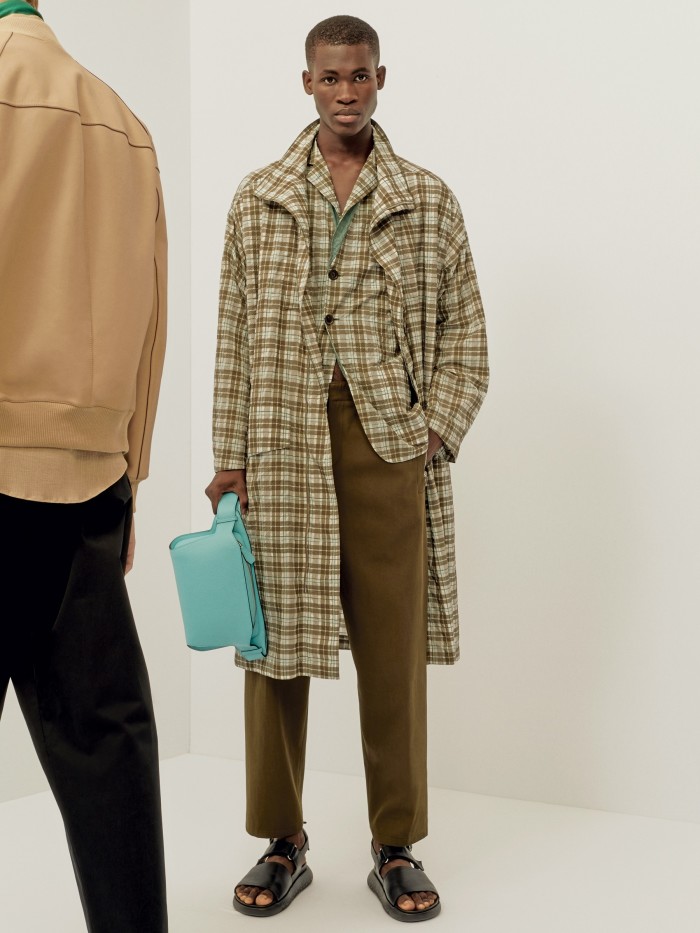
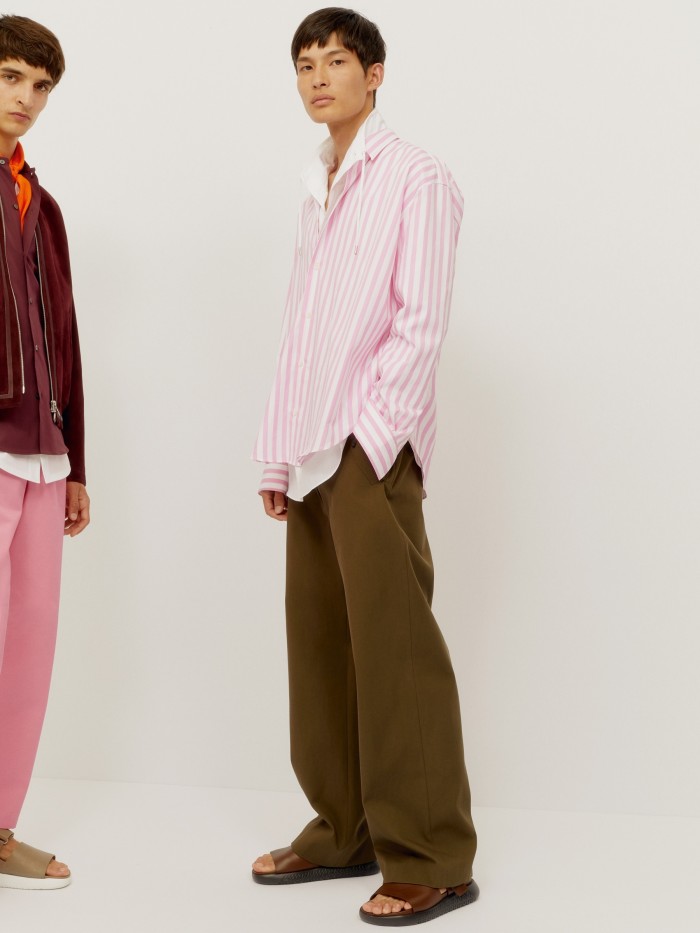
And yet she’s also rooted in reality. While many designers insist on deliberately eschewing seasons to try to express a form of timeless luxury – but actually wind up showing sweaty knits in sweltering summer collections and skimpy swimsuits on shivering models – there’s an assurance to Nichanian, which means we get suitably sweeping cashmere and leather coats for winter, and shorts and blousy printed silks for summer. The current collection pops with colour – always her first port of call. “I start with the colours and start with the fabrics,” she says. “And, after, I start with my team to design the shirt and the proportion. Most of the designers have in their mind the right proportion of what they want, and after they look for the fabrics. For me, it’s really – in the beginning – the opposite.”
Which is perhaps why Hermès’ colours are so succulent and unexpected, like a bright Aquafresh combination of peppermint, white and Spitfire-red; a buttery yellow alongside ochre; or bordeaux against a putty pink. Nichanian never shies away from putting men in pink – or print. This season saw a whole bunch of jackets scribbled over with Hermès scarf prints, softly sportif and worn with pinstripe pants. For some reason, like almost all the Hermès men’s collections, it stuck in one’s mind. It offered a genuine alternative to most fashion – a palate cleanser. An honest point of view.
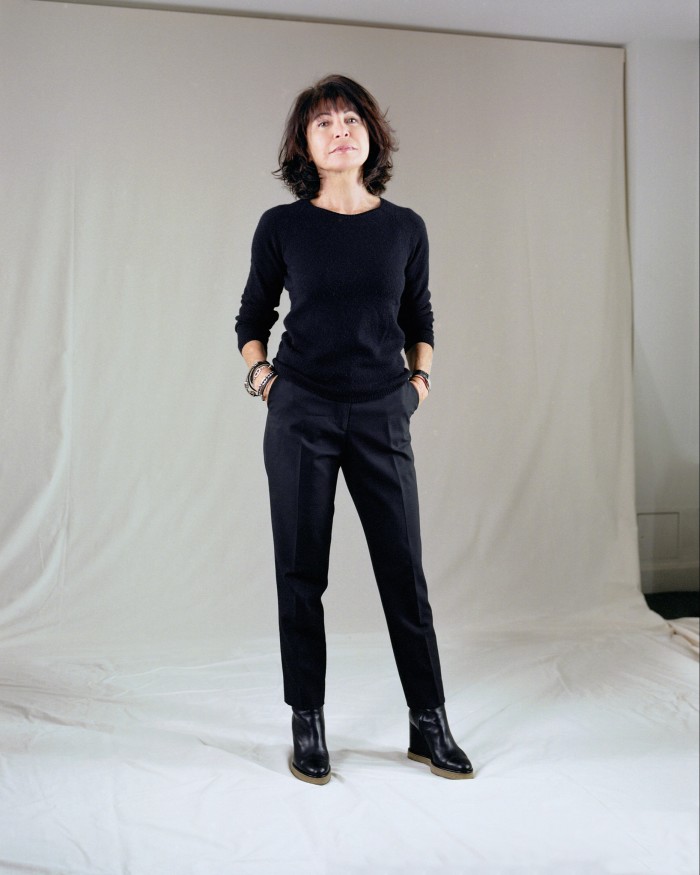
We speak a few days before Nichanian’s follow-up for autumn/winter 2020, presented in January: she’s holed up fitting her collection on phalanxes of flawless models in a spacious modernist house in the snobby 16th arrondissement. It’s far away from the madding crowds of fashion week – or even the madding crowds who relentlessly throng Hermès’ historic flagship at 24 Rue du Faubourg Saint-Honoré, where the label has had a boutique since 1880. Even during the weeks of transport strikes and protests that crippled Paris in December and January – pushing down retail turnover around 30 per cent across the capital – a well-formed line still snaked outside an hour before the store was due to open every day. Those lines, every day, have helped to drive Hermès’ turnover to €6.88bn in 2019, a 15 per cent increase year-on-year (ready-to-wear and accessories, for men and women, comprise 22.86 per cent of turnover). It’s easy to understand why Nichanian’s clothes have huge consumer appeal. While Hermès womenswear has oscillated through different design aesthetics – from the braying, pussy-bowed Sloanes of Eric Bergère through to the purist luxury of Nadège Vanhée-Cybulski – Nichanian has stayed a constant: calmly continuing to create her compelling universe of menswear.
Nichanian cut her fashion teeth with Italian tailoring master Nino Cerruti; she began working with him when she was 19, plucked fresh from the École de la Chambre Syndicale de la Haute Couture. Incidentally, he was also a formative mentor of Giorgio Armani, another streamlined and stripped-back menswear aficionado. Under Cerruti, Nichanian was able to indulge her love of textiles, working in his mills and factories in Piedmont in northwest Italy. “I was crazy with the fabrics,” she says of her earliest passion. “I was living in Paris and my mother was crazy because I was buying fabrics all the time,” she laughs. “I cannot resist. It’s crazy. Some people like big diamonds – for me, it’s fabrics.”
She worked with Cerruti for 12 years, eventually co-directing his menswear collections, before Hermès called in 1988. Literally. “Like in the fairytale, to be honest. I was in my flat, and I got a phone call, and I took the phone call, and somebody said, ‘Hello? I’m Jean-Louis Dumas and I would like to meet you.’ And I said, ‘That’s funny. Who’s on the phone?’” Dumas was chairman of the Hermès group from 1978 until 2006, as well as being the artistic director who came up with the now emblematic Birkin bag following a meeting with its eponym on a flight in 1984. He persuaded Nichanian to have breakfast with him.
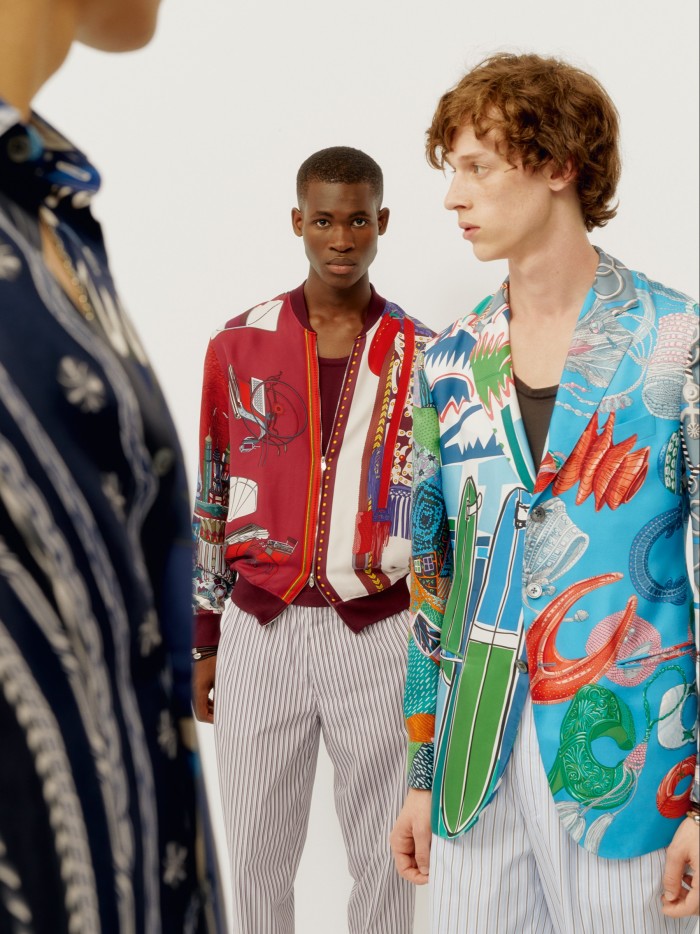
She knew the brand – then hardly the luxury behemoth it has become today – because her mother bought Hermès scarves. “He told me about this vision, what he wanted to make for Hermès, and he said, ‘I want you to take the men’s side and do it as your own.’ I said, ‘OK, let’s start.’” She shrugs, smiles. “And I’m still here.”
Nichanian practically cracks her knuckles as she lays out the parameters of her role as artistic director of the men’s universe. “That means, OK, designing with my team the ready-to-wear. But I’m also working – not designing – with Pierre Hardy for the shoes, and Christophe Goineau for the scarves, and all the creative directors for each part. The shoes, the scarves, the bags. So, at that part of my job I’m like a conductor, bringing everybody together... And at Hermès we love working all together, because we are always better as several people than as one. We have more ideas. I love talking to them, and finding ideas together and finding something in the silk. We make these double-face scarves – silk – which are two different prints, different colours on the two sides. We worked on that for five years.”
Another luxury: time. Not for the number of hours it takes to make Hermès pieces (they’re obviously labour-intensive), but because neither the house nor its designers seem overly concerned with churning out masses of product, nor with making existing models obsolete: the Haut à Courroies, which pre-dates the Birkin, often appears in Nichanian’s men’s collections, as do styles based on the 1923 Bolide, both scaled to masculine size. Accordingly, Nichanian’s work has longevity. “It’s long-lasting,” she says. “You buy it because you fall in love with the clothes, but after you understand and you realise that [while] it’s expensive, it’s costly. It’s more costly than expensive, because every step is expensive.”
She pauses. “I’m here for 30 years, and for 30 years I’m doing the same thing. I’m very happy when I meet people in the street, wearing a mix of things from the very last season or 20 years ago. I love that because it’s my reality.”
Given that love of the past, I wonder if Nichanian takes inspiration from Hermès’ archives? After all, those archives are so covetable they have been the subject of theft – in 2014, the Italian designer Massimo Piombo was caught purloining a selection of Hermès samples from a Lyon textile archive belonging to the brand: he was sentenced in 2016 to a suspended prison term of three months and a fine of €15,000. Nichanian has free rein over the Hermès back catalogue, but when I ask, she shakes her head. “No, I don’t go to the archive,” she says. “I don’t look back. I don’t look back because they were very, very clever and very talented to create these things, but I try to express my time. I think now is a great opportunity to express new things with new materials and technologies. I look forward. I know the archive. There’s beautiful things, and beautiful ideas, but I want to express something different – modernity.”
It’s a refreshing response at a time when many fashion brands are rooted in the glories of their past rather than focusing on the future. “A journalist told me, a few weeks ago, he said, ‘You’re your own archive,’” Nichanian recalls. And, after 30 years, that’s undoubtedly true. She grins. “I have just one story. Yesterday, we had some models come in, and I said to one young guy, ‘Oh, you have a beautiful bracelet.’ He said, ‘Yes, it’s an Hermès!’ And I was looking, and I said, ‘Oh, I did not know that, it’s very beautiful.’ He said, ‘It’s ancient. It’s from 2000.’” She rolls her eyes, grinning even wider. “Oh my God, 2000. My God! I said, ‘How old are you?’ He said, ‘I’m 17.’ I was like, ‘Oh my God, of course.’” She laughs uproariously. Perhaps honesty isn’t always the best policy.
Comments